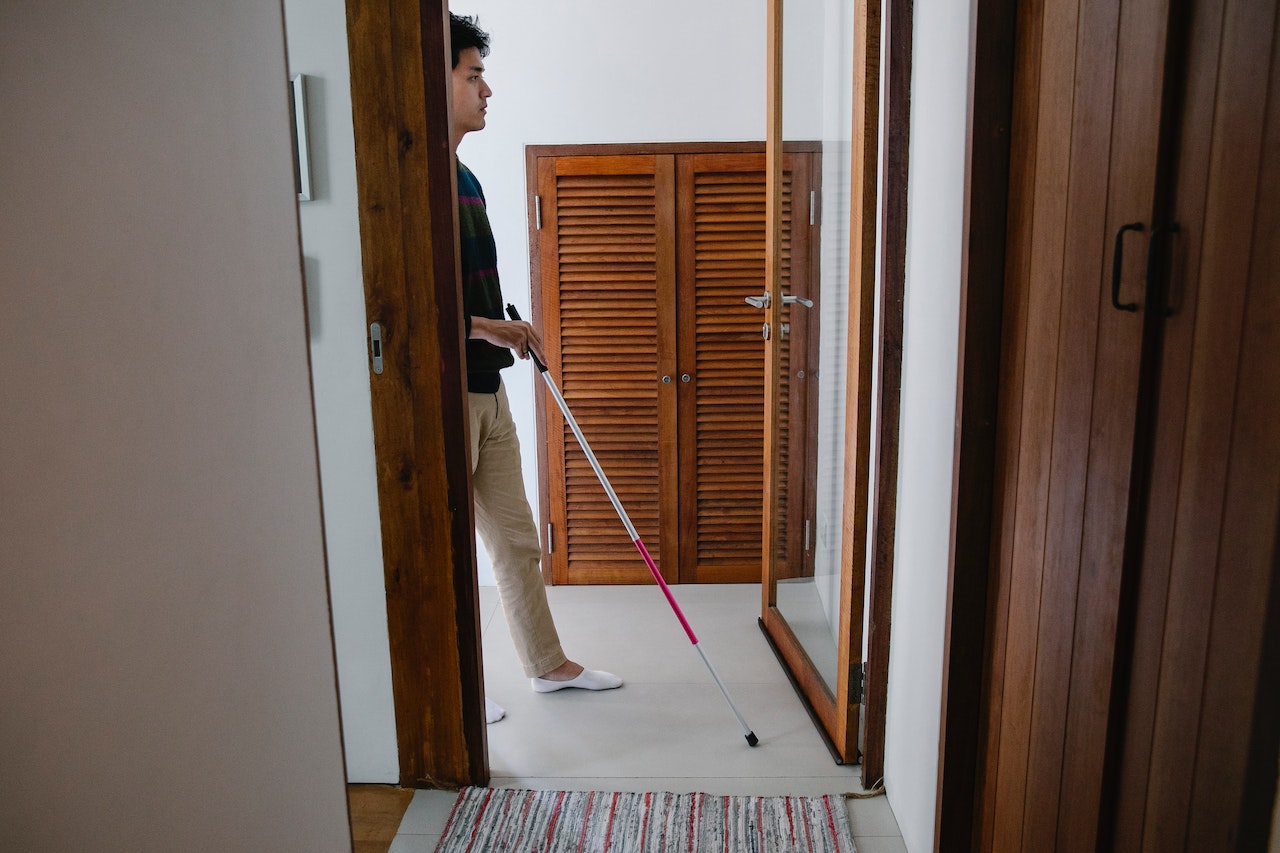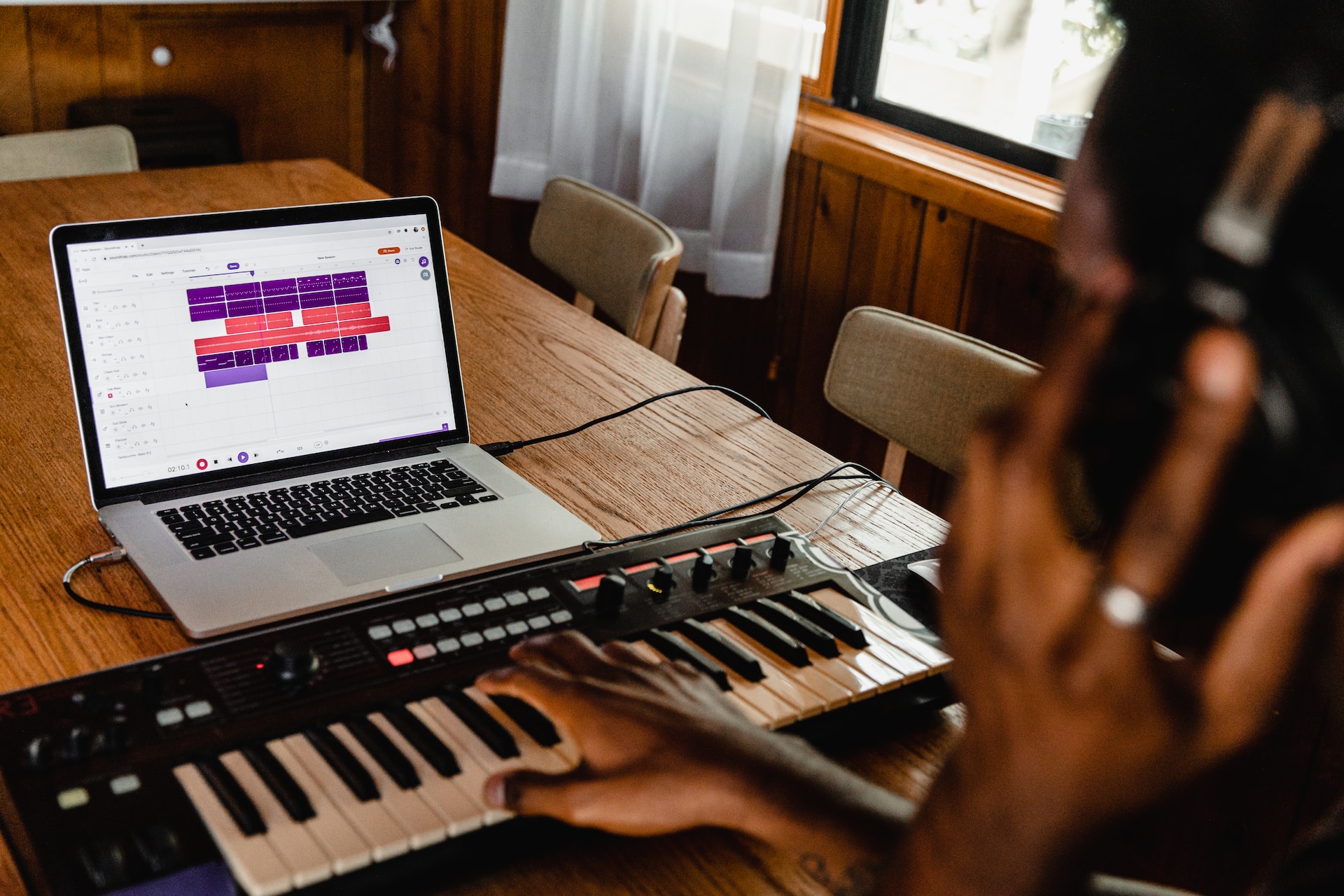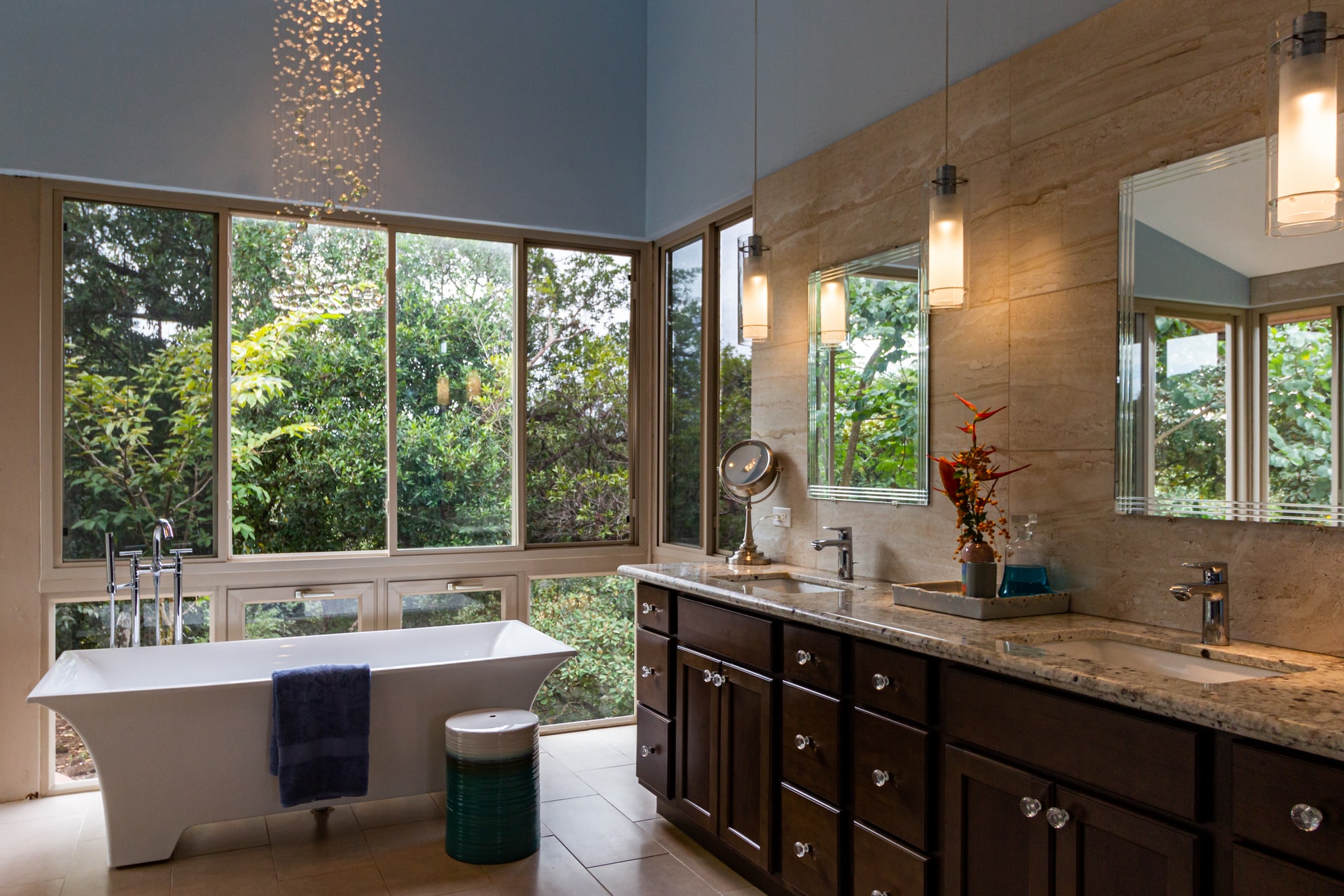If you’re visually impaired, assistive technologies like smart gadgets and new technology are available to provide you with a better living environment – not just for yourself but also for your loved ones. These cutting-edge gadgets are empowering the visually impaired to lead more independent and fulfilling lives in many ways.
If you’re interested in learning more about the latest innovations in assistive technology, this guide covers a variety of helpful tools you can use to help create a functional home that suits your needs. Each of these gadgets is designed to enhance the quality of life for visually impaired homeowners and their families.
Understanding visual impairment
The term visual impairment refers to vision that ranges from poor or low vision to blindness that can’t be corrected by surgery, medication, or wearing glasses or contact lenses. Having a visual impairment can affect your ability to perform daily activities and impact your mental health and well-being. You may have trouble performing routine tasks, even if you have contact lenses or glasses. There are three main categories of visual impairment:
- Low vision: This term means your vision is between 20/70 and 20/400 with the best possible correction, or you have a visual field of 20 degrees or less. Low-vision devices like optical magnifying glasses can help with some tasks.
- Partial blindness: The term partial blindness means you have very poor vision but can still see light. Most people with partial blindness have vision worse than 20/200, even with corrective lenses or glasses. Partial blindness is considered legally blind in most of the United States. You may benefit from using screen readers and voice-activated devices.
- Total blindness: If you’re totally blind, you can’t see anything, including light or shapes. Braille and new voice reader technology are just some examples of assistive tools that can help the totally blind.
It’s important to understand the type of visual impairment you have to help you choose the appropriate assistive tools, technologies, and support systems. Once you’re diagnosed, look for specially tailored solutions that’ll enhance your quality of life and well-being as a whole.
Enhanced accessibility through an internet connection
A reliable internet connection is a valuable tool for everyone, particularly for those with a visual impairment. With the help of internet-based assistive technologies like virtual assistants, assistive smart home devices, and IoT integration, visually impaired people can experience enhanced accessibility and simplify their daily routines. Below are some enhanced technologies and how they can help your quality of life improve.
The importance of a reliable internet connection for the visually impaired
The ability to use the internet allows those with a visual impairment to accomplish a variety of everyday tasks, such as studying, working, and connecting with others. Having a reliable internet connection is vital, as there are many tools available that rely on a strong internet connection. Each tool is designed to help with everything from reading and writing to performing daily tasks around the home. Reliable internet provides autonomy, social inclusion, and independence, so it’s important to have a strong, secure connection you can rely on at all times.
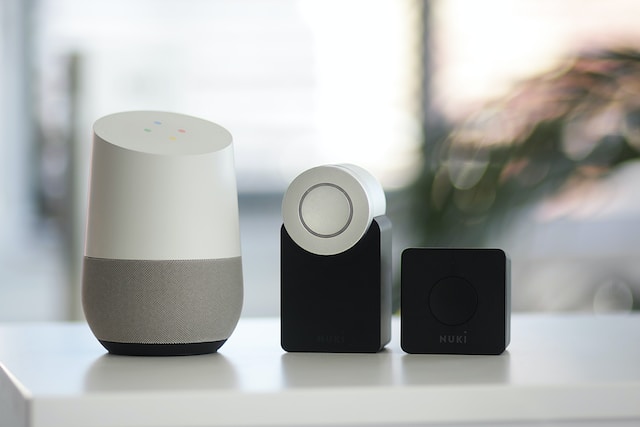
Assistive technologies for greater accessibility
There’s a wide range of assistive technologies available to provide greater accessibility for the visually impaired. Each of these technologies helps you perform a wide range of different tasks essential to daily life.
Smart home devices
Smart tech for the visually impaired, such as smart home devices, allows you to control household appliances through voice commands and smartphone applications. Thanks to these new technologies, you can do everything from turning the lights on and off to cooking. Smart locks and smart wireless cameras provide a higher level of home security, and many of the newest gadgets include voice controls by default. Products like smart speakers that use tactile components help you turn the volume up or down, skip songs, or find media, all using voice and touch rather than relying on eyesight alone.
Virtual assistants
AI-powered virtual assistants are excellent tools that assist with information retrieval, task management, and navigation around the home. New special electronic glasses for the visually impaired feature a VR headset that works with a smartphone. These unique glasses help you do things like read and watch television, all with the help of artificial intelligence. New developments in virtual assistant technology include gadgets that speak to the user so they can envision the scene in front of them.
Internet of Things (IoT)
Internet of Things – or IoT – refers to physical objects that connect to the internet to improve accessibility and simplify your daily routines. These objects can be anything from a voice-activated thermostat to a door lock, lightbulb, or kitchen appliance. Integrating IoT gadgets for the visually impaired into your home gives you more control over your life and your ability to navigate through your day.
AI-powered gadgets: transforming the lives of the visually impaired
AI – or artificial intelligence – has a transformative impact on the lives of visually impaired individuals by providing a range of services that make life easier. Cutting-edge AI-powered gadgets, including smart glasses, AI-enabled cameras, and navigation aids, not only improve quality of life but also enable safer, more independent living.
Cutting-edge AI-powered gadgets for the visually impaired
Each of these unique gadgets uses the power of AI to provide a wide range of helpful services that provide a positive impact on people’s lives. Not only do they make it easier for those with a visual impairment to live more independently, but they also make life safer.
Smart glasses
AI-powered smart glasses offer augmented reality solutions that provide real-time audio feedback, object recognition, and more. These lightweight glasses include a camera and a speaker that reads text out loud, offers information about the environment, and recognizes things like faces, light, and colors. With AI-powered text recognition, users can decipher anything from typed text to handwriting. Some models allow you to read the text in dozens of languages. With smart glasses, you can read any text in front of you and turn long-form text into speech.
Some smart glasses feature even more exciting developments, like layout detection and voice guidance. Integration with ChatGPT lets the wearer ask questions and get answers fast. These glasses also let you scan documents, access content, and store people and objects you recognize for easier detection. Look for smart glasses that allow you to change the color or contrast of what you’re looking at. Some models also include built-in barcode and QR code scanners and optical character recognition that speaks out printed documents of all kinds. Pair them with a wireless controller, a smartphone app, or via simple voice commands.
AI-enabled cameras
AI-enabled cameras perform a wide range of services to help the visually impaired. These specially designed cameras can describe your surroundings, read texts, and identify faces to provide you with a feeling of security and peace of mind. Not only do these cameras help around the home, but AI-driven navigation devices with cameras also provide safe and independent travel outside the home.
New apps are being developed that use artificial intelligence to describe currencies, text, and people without the need for a separate camera. All the user needs to do is hold the phone close to an object around them, and the AI, app, and camera work in sync to identify the item and give audio information and guidance.
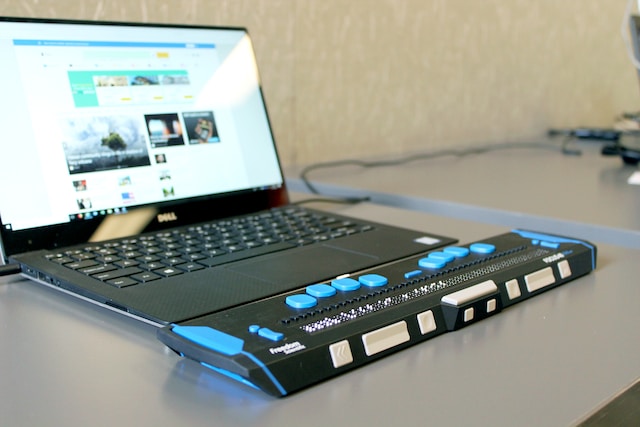
Innovative household gadgets: empowering visually impaired homeowners
Part of being fully independent is having an accessible home that’s easy to navigate. There are many household-specific challenges that visually impaired homeowners may face, including cooking, using the bathroom, and operating thermostats and home appliances. Fortunately, new devices designed to aid with performing a variety of household tasks allow visually impaired homeowners to do things safely and more efficiently than ever before.
Here are some examples of new, innovative household gadgets and how they’re empowering the visually impaired to take control of their lives.
Overcoming challenges in performing household tasks with innovative gadgets
Simple tasks like finding ingredients, changing the temperature, and operating appliances can be challenging if you are visually impaired. These innovative gadgets are designed to help make these seemingly simple tasks easier, safer, and more streamlined.
- Tactile labeling systems: Tactile labeling makes it easier for the visually impaired to find various objects throughout the home. These labeling systems allow you to make your own labels using braille or other raised tactile symbols. They can be particularly helpful in identifying potentially dangerous objects or specific medications to help you function at home more safely and independently. A tactile labeling system helps you stay organized so you can find what you need more easily.
- Talking thermostats: A talking thermostat allows the user to change the indoor temperature through voice controls. New smart thermostats let you set timers and get voice alerts for filter changes, all through voice activation.
- Talking appliances: Integrating voice assistance into appliances makes life easier for the visually impaired. These talking appliances can learn your preferences (like the temperature setting of the oven or refrigerator), turn on and off, and perform other tasks, all through specific voice commands.
- Smart sensors: Using smart sensors in the home is vital to help you stay safe. Water leak detection sensors alert you via sound if a possible leak is present. Fire and carbon monoxide smart sensors use extremely loud noises to alert homeowners of a possible fire or carbon monoxide leak. Other smart sensors may alert you to a nearby object to help you avoid tripping and collisions at home.
Innovative navigation technologies for independent mobility
There are many innovative navigation technologies available to help you achieve more independent mobility both at home and away.
- Indoor navigation systems: Special indoor navigation systems can help you do more than just navigate the home. These special systems download maps of any location to help you navigate more easily once you get there, providing voice assistance as you move. You can use these technologically advanced indoor navigation systems to move around places like stores, hotels, museums, and airports.
- Outdoor navigation solutions: Electronic orientation aids help visually impaired people find navigation paths using cameras and sensors that identify obstacles and clear pathways. Position locator devices determine a precise position using GPS (global positioning systems) and GIS (geographic information system) technologies to safely guide you to your destination. Electronic travel aids detect obstacles and landmarks to improve general orientation while outdoors.
- Mobility assistance devices: Technology like smart walking sticks helps to improve mobility and navigation while you walk. These sticks detect obstacles and use voice commands to help you navigate and stay alert while mobile. They can also measure the distance between the user and other objects using special built-in sensors.

Additional resources for the visually impaired and their support system
There’s a wealth of resources designed to support visually impaired people and their loved ones, including support groups, financial assistance programs, and education and training. Read on to learn more about a variety of reputable and reliable resources that can help improve your quality of life.
Organizations and support groups
It’s important for people who are visually impaired to find resources to support their mental health and well-being. Joining organizations, online support groups, and forums provides you with a wonderful way to connect with others who face similar challenges.
- Eye2Eye: This organization is a free, phone-based peer support program. The organization provides assessment, information, referrals, and emotional support to the blind or visually impaired and their families. Trained peer support specialists are also blind or visually impaired, and the group serves people in over 20 states.
- The American Council of the Blind: This group offers a list of resources for visually impaired people and their families, as well as a national directory of affiliates in every state.
- The Hadley Institute for the Blind and Visually Impaired: This organization offers tuition-free distance learning courses on a wide range of topics. It also helps people participate in self-help groups to deal with various issues people with low vision and blindness may face.
Financial assistance programs
There are several financial aid programs and grants available that support the purchase of assistive technologies. Aside from this assistance, it’s important to research your health insurance options to find out which assistive technology coverage is available to you.
- Dr. Maureen Powers Quality-of-Life Grant: This grant offers funding for smartphones, tablets, computers, braille equipment and training, low-vision products, and home equipment that aids in safety for the visually impaired.
- Assistance Dog United Campaign: This program provides vouchers to people who may need an assistance dog or service animal.
- Association of Blind Citizens: The Assistive Technology Fund from this organization provides financial assistance for assistive technology and services to those with visual impairments.
Education and training
There are many accessible online courses and training programs available for the visually impaired to help them learn new skills. Here are some examples of options to investigate, as well as reputable resources for caregivers and family members that may provide better understanding and support for loved ones.
- Association for Education and Rehabilitation of the Blind and Visually Impaired: This membership-based organization offers support and help to professionals working in the education of visually impaired and blind children and adults.
- National Library Service for the Blind and Physically Handicapped: This group is part of the Library of Congress and offers a free library program of braille and audio materials. The materials are available to eligible U.S. residents via postage-free mail.
- FamilyConnect: This website gives parents of visually impaired children a place to find support. Users can share their stories and concerns and find resources about raising visually impaired children from birth all the way to adulthood.
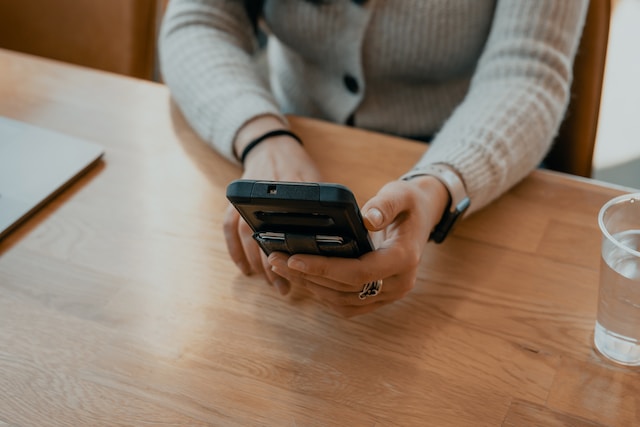
From voice-activated appliances and AI-powered aids to innovative household gadgets and support groups, there are many resources available to help improve the quality of life for those who are visually impaired. Cutting-edge devices and technologies, paired with additional resources, help to create a more supportive and inclusive living environment for visually impaired people and their family members. Each of these technological advancements is specifically designed to make a positive impact on the lives of the visually impaired and their loved ones.
